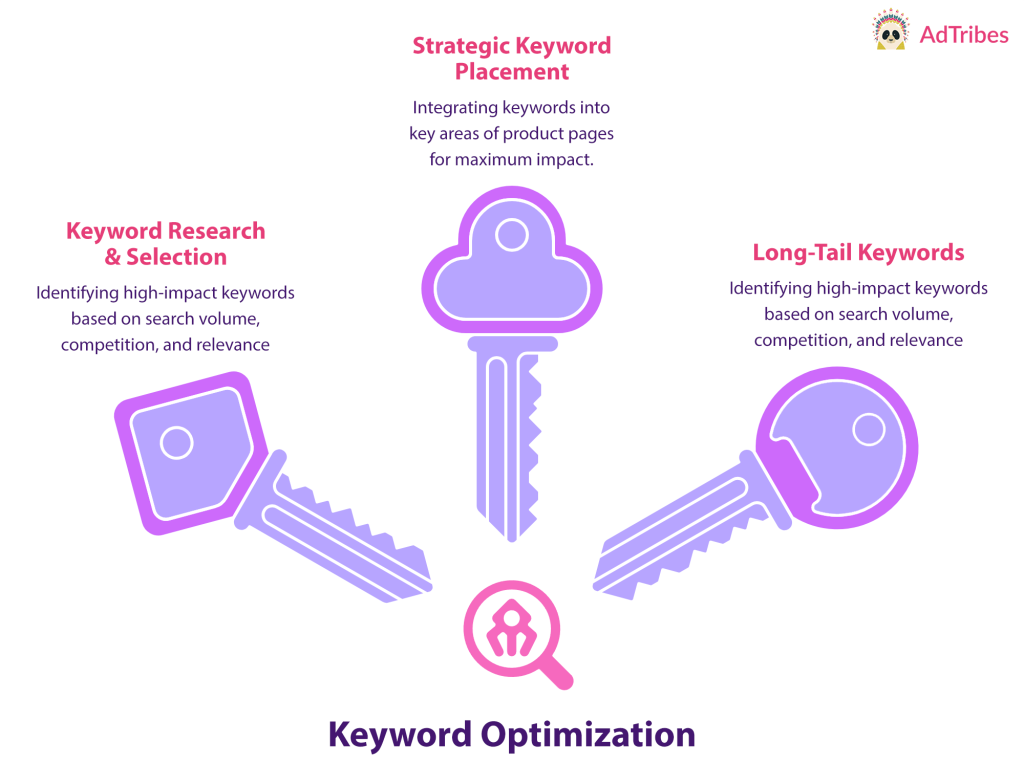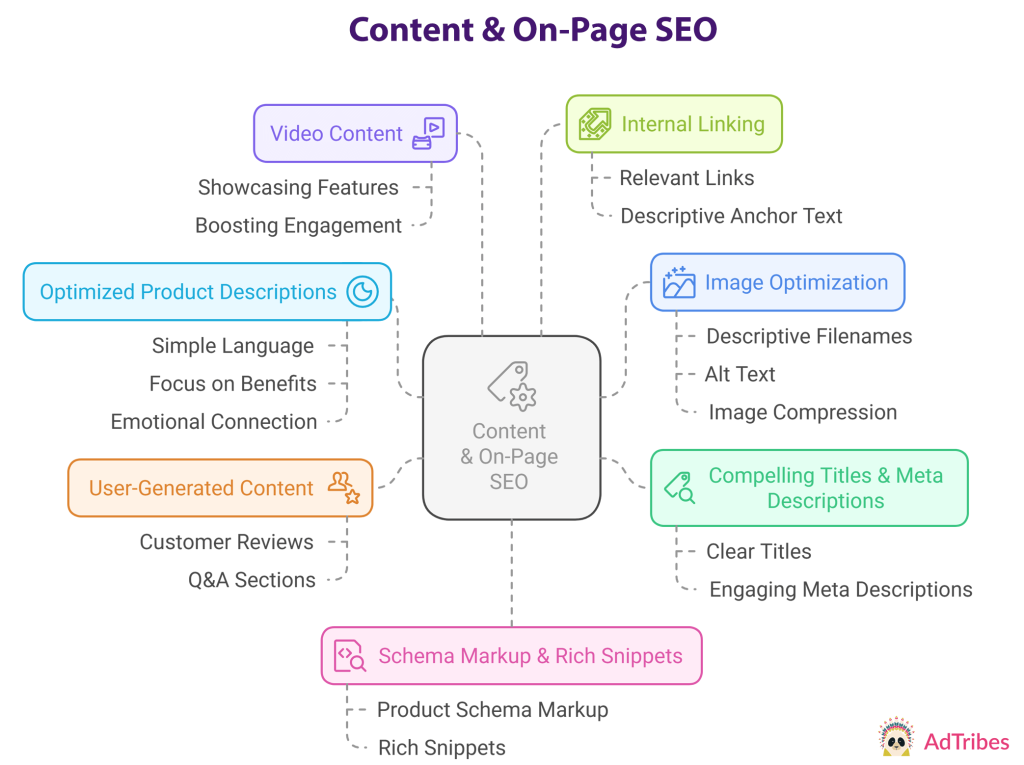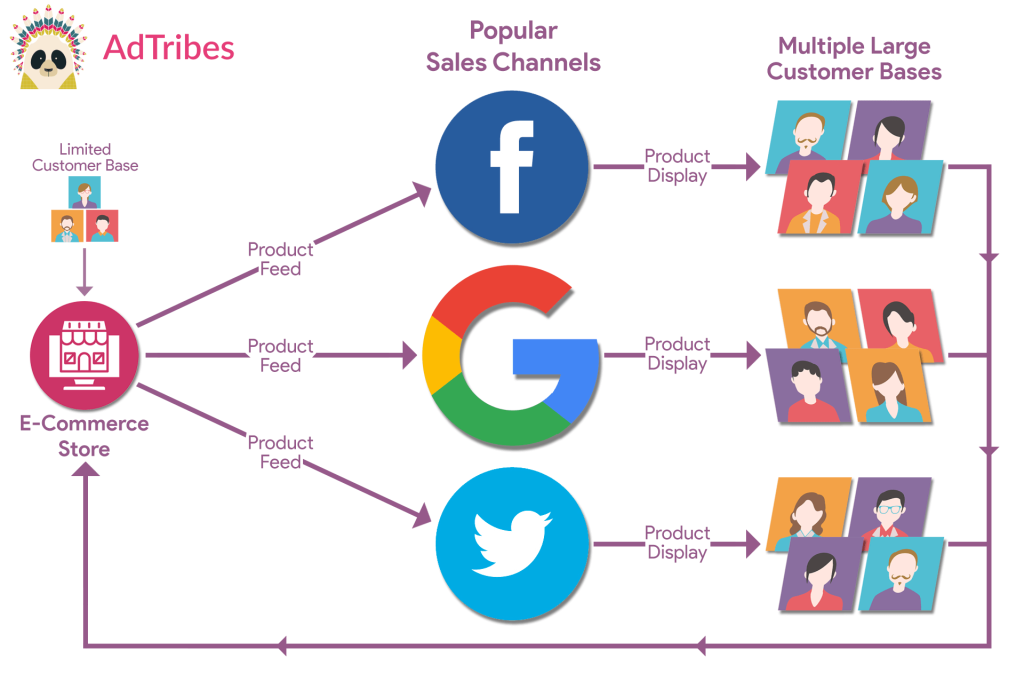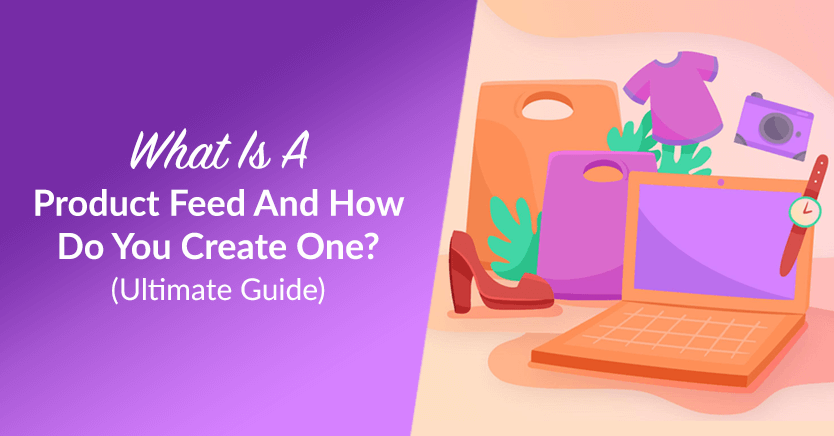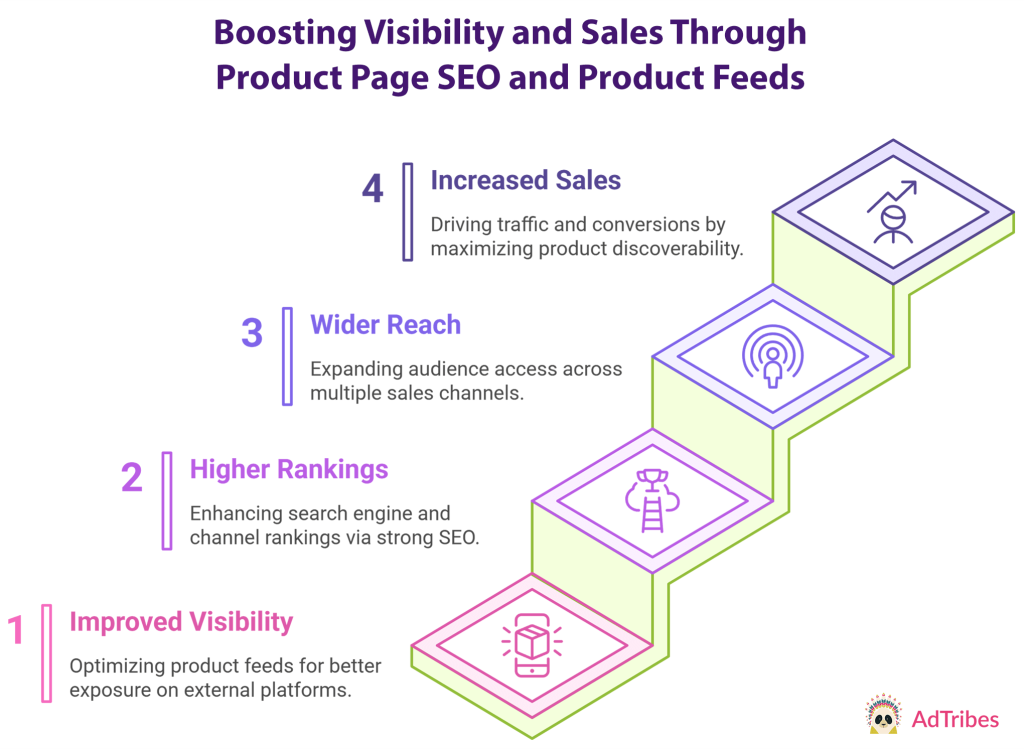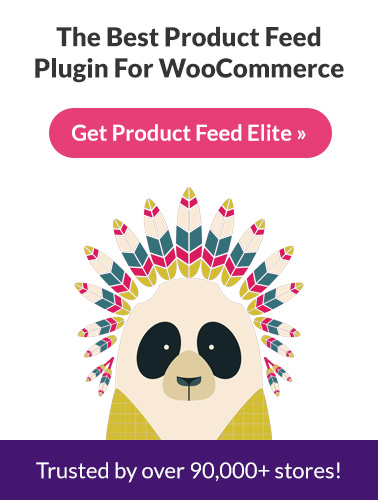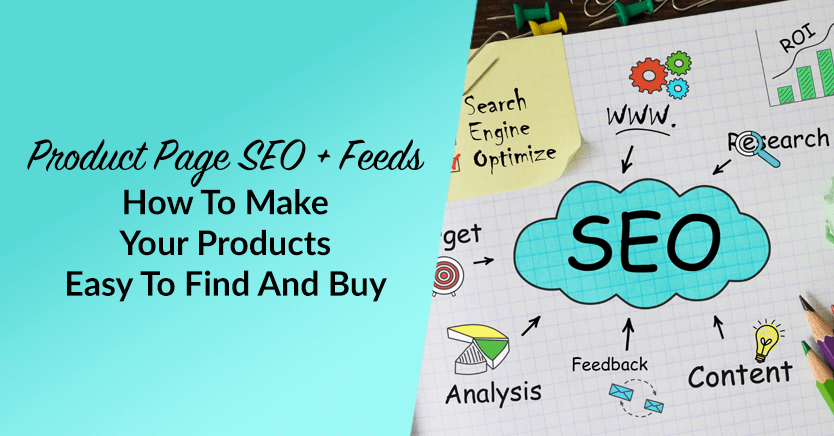
Product page SEO helps your store stand out in search results. Most shoppers don’t go beyond the first page. If your ecommerce product pages aren’t optimized, they might never see them.
From our experience, good SEO isn’t just about getting more visitors. It’s about attracting the right ones. After all, you want buyers, not just browsers.
Remember: when your pages match what people are searching for, your chances of making a sale increase.
This guide covers essential SEO strategies. We’ll also explore product feeds—a powerful tool that, when combined with SEO, helps you reach the right audience in more places.
So let’s get started!
- I. What Is Product Page SEO?
- II. Product Page SEO: Fundamentals & Best Practices
- III. Product Page SEO & Product Feeds: A Perfect Pair
- Conclusion
I. What Is Product Page SEO?
Before diving into product page SEO, let’s first define SEO.
SEO, or Search Engine Optimization, is the process of improving a website or webpage to rank higher in search engine results. It involves optimizing content, structure, and technical aspects to make a page more visible to users searching for relevant topics.
Product page SEO focuses on optimizing individual product pages for ecommerce sites to improve their visibility in search results. This includes:
- Using relevant keywords.
- Crafting compelling titles and descriptions.
- Optimizing product page URL structures.
- Enhancing on-page elements like images and metadata.
- …and more!
Basically, the goal of product page SEO is to ensure that when potential customers search for a product, they find your page easily, click through, and ultimately make a purchase.

II. Product Page SEO: Fundamentals & Best Practices
Why should you optimize product pages for search engines? Simple: it drives organic traffic, improves visibility, and increases sales.
To ensure your products rank higher and attract the right audience, observe the following key fundamentals and best practices:
1. Keyword optimization
Optimizing your keyword strategy is the foundation of ecommerce product page SEO. The right keywords ensure your products appear when shoppers search for them, increasing visibility and conversions.
i. Keyword research & selection
Choosing the right keywords starts with understanding what potential customers are searching for. We’ve found that using tools like Google Keyword Planner, Ahrefs, or SEMrush can help you identify high-impact keywords based on search volume, competition, and relevance.
- High-volume keywords bring more traffic. However, they’re usually highly competitive, making it harder to rank with them.
- Low-volume keywords may attract fewer visitors. Fortunately, they often convert better due to more specific intent.
A balanced mix of both can maximize reach and sales potential. Basically, it’s a good idea to prioritize a mix of broad and specific terms that align with shopper intent.
Example:
A store selling wireless earbuds researches keywords and finds that “best Bluetooth earbuds for running” has a high search volume yet low competition, making it a great choice.
ii. Strategic keyword placement
Once you’ve selected keywords, they must be placed naturally in key areas of your product page. These include:
- Product titles: Ensuring search engines and shoppers instantly understand what you’re selling.
- Meta descriptions: Making them compelling while including essential search terms.
- Headings & subheadings: Enhancing readability while reinforcing relevance.
- Product descriptions: Weaving keywords smoothly into persuasive copy without stuffing.
- Image alt text: Improving accessibility and SEO by describing product images with relevant keywords.
Example:
A product page for a coffee grinder uses the keyword “manual coffee grinder” in the title, meta description, headings, and image alt text while keeping the description natural:
“This manual coffee grinder features precision ceramic burrs for a consistent grind, perfect for home or travel.”
iii. Long-tail keywords for targeted traffic
Long-tail keywords are more specific yet less competitive phrases. They attract shoppers who are closer to making a purchase.
For example, instead of “running shoes,” a long-tail alternative might be “men’s lightweight running shoes for marathons.” We’ve found that such phrases often lead to higher conversion rates because they match precise user intent. Thus, it’s good practice to incorporate long-tail keywords in descriptions, FAQs, and product reviews to capture qualified traffic.
Combining broad and long-tail keywords with smart placement makes your product pages more discoverable. As a result, you bring in high-intent buyers while improving rankings in search results.
Examples:
The following are long-tail keywords:
- Bluetooth earbuds with noise cancellation
- Round walnut coffee table with storage
- Indestructible squeaky toy for large dogs that love to chew
2. Content & on-page SEO
Product page optimization isn’t just about keywords. It’s about making your content clear, engaging, and easy for shoppers and search engines to understand.
i. Compelling titles & meta descriptions
A good title and meta description can differ between someone clicking your product or skipping it.
- Titles should be clear and descriptive and include important keywords naturally.
- Meta descriptions don’t directly affect rankings but should be engaging and informative. They should give a quick summary of the product, encourage users to click, and include relevant keywords.
Example:
Title: “Organic Lavender Essential Oil – 100% Pure, Therapeutic Grade”
Meta Description: “Discover the calming benefits of our Organic Lavender Essential Oil. 100% pure and therapeutic grade, perfect for relaxation, skin care, and aromatherapy. Shop now!”
ii. Optimized product descriptions
An effective product description does more than list features; it tells a story that persuades shoppers to buy.
To write product descriptions that attract shoppers and improve SEO, follow these strategies:
- Use clear, simple language: Keep descriptions easy to read. Avoid unnecessary words and get straight to the point so shoppers quickly understand why your product is great.
- Focus on benefits: Don’t just list features; explain how they help. Instead of “Water-resistant material,” say “Keeps your belongings dry, even in heavy rain.”
- Make it easy to scan: Use bullet points, short paragraphs, and bold key phrases so shoppers can quickly find important details.
- Connect with emotions: Show how the product improves life. Instead of “Soft memory foam,” say, “Sink into cloud-like comfort after a long day.”
- Answer common concerns: Think about what shoppers might worry about and address it. If a product needs assembly, mention that it’s quick and easy to set up.
- Create urgency: Use phrases like “Limited stock available” or “Order now for same-day shipping” to encourage buyers to act quickly.
- Tell a story: Help shoppers picture themselves using the product. Instead of “Durable hiking boots,” try “Conquer rocky trails and muddy paths with confidence.”
- Use keywords naturally: Add important search terms without making them sound forced. Instead of repeating the same words too much, focus on writing in a natural and helpful way.
This keeps descriptions engaging, easy to read, and optimized for shoppers and search engines.
Example:
Product title: “Interactive Robot Dinosaur Toy – Roars, Walks, and Moves Its Tail!”
Product description: “Bring the prehistoric world to life with our Interactive Robot Dinosaur Toy! This lifelike dino roars, walks, and even moves its tail—just like a real T-Rex! With touch sensors, your little one can make it react to their commands. Perfect for dino lovers, it’s built to last with durable materials that withstand hours of play. Watch as the eyes light up and the dino’s jaws snap! Don’t wait! Grab yours now and let the adventure begin!”
iii. User-generated content
Customer reviews and Q&A sections make your product page more trustworthy and help it appear in search results.
- Customer reviews: Reviews build trust and help your page rank higher by including real feedback with natural keywords. Shoppers rely on them to decide if a product is worth buying. To get more reviews, make it easy for customers to leave one; send a reminder email or offer a small discount for their next purchase.
- Q&A sections: A question-and-answer section helps customers feel confident about their purchase. When shoppers see answers to common questions, they’re more likely to buy. Moreover, search engines notice new Q&As, which can help your page stay relevant in search results.
Customer reviews and Q&A sections do more than add content; they create trust, improve engagement, and boost search rankings. Encouraging reviews and answering common questions makes your product page more helpful, convincing, and visible to potential buyers.

iv. Image optimization
High-quality images are important, but they need to be optimized for SEO. Here’s how:
- Use descriptive filenames: Give your image file a name that clearly describes the product it represents. This helps search engines understand the content of your image and improves its chances of appearing in search results.
- Add alt text: Write a short, keyword-rich description so search engines and visually impaired users can understand the image.
- Compress images: Smaller file sizes load pages faster, improving user experience and rankings.
Example:
Instead of “IMG123.jpg,” name it “blue-running-shoes.jpg” to help search engines understand the image.
v. Video content for higher engagement
Adding product videos can lead to great product page SEO. After all, they help boost engagement and conversion rates, key factors in improving your search rankings.
Videos help showcase your product’s features, use cases, and benefits in a dynamic way that static images or text can’t. It’s no wonder visitors are more likely to buy after watching a product video.
Furthermore, video content can improve SEO by keeping visitors on the page longer, signaling to search engines that your content is valuable.
vi. Internal linking
Internal links guide customers to other relevant pages on your site, keeping them engaged longer. They also help search engines crawl and index your pages more efficiently.
When you connect related products or blog posts, you can increase page views and lower bounce rates.
Make sure links are relevant and use descriptive anchor text to improve SEO.
vii. Schema markup & rich snippets
Product schema markup is a special code added to your product page to help search engines understand your product details more clearly. This can enable rich snippets, which are enhanced listings in search results that display additional information like star ratings, pricing, and stock availability.
When you show these details, your product becomes more visible and appealing to shoppers. As a result, this increases their likelihood of clicking on your page.
Example:
For a product like an Interactive Robot Dinosaur Toy, schema markup could include details such as:
- Product Name: Interactive Robot Dinosaur Toy
- Price: $29.99
- Availability: In Stock
- Rating: 4.5 stars (based on customer reviews)
When these details appear directly in search results, users can quickly see the product’s price, rating, and availability without having to click through to the page, making it more likely they will choose your product over others.
3. Technical & structural SEO
Technical and structural SEO focuses on the behind-the-scenes aspects that improve user experience and search engine performance. These factors ensure that your website loads quickly, is easy to navigate, and is secure.
The following can boost your product page SEO and, thus your rankings:
i. Fast page speed & core web vitals
Slow pages frustrate users and hurt SEO. Thus, fast loading times are crucial for user experience and search rankings.
Aim to keep your page load time under 3 seconds. Fast pages lead to lower bounce rates, higher engagement, and improved rankings, making your site more attractive to shoppers and search engines.
ii. Mobile optimization
Make sure your website works well on phones and tablets. After all, more people shop on mobile devices. Therefore, a smooth mobile experience is important for rankings and sales.
To ensure your website performs well on mobile devices, focus on these key areas:
- Text readability: Ensure the text is large enough to be easily read on smaller screens without zooming.
- Button accessibility: Make sure buttons are large enough to click comfortably on mobile devices.
- Page load speed: Optimize your site to load quickly on mobile devices, improving user experience and SEO rankings.
Take note: Google also prioritizes mobile-friendly sites in its rankings.
iii. SEO-friendly URL structure
URLs play a big role in improving your SEO for product pages. After all, keeping them clear and simple can improve both user experience and search rankings.
- Short & descriptive: Use short, descriptive URLs that clearly explain what the page is about.
- Avoid complex URLs: Avoid long and confusing URLs, like “example.com/product?id=12345.” They’re harder for users and search engines to understand.
- Include keywords: Including relevant keywords in your URL helps both search engines and shoppers understand what your page is about.
- SEO boost: Simple, keyword-rich URLs can boost your page’s search rankings and make it easier for customers to find.
Examples:
For our “Interactive Robotic Dinosaur Toy”:
- Good URL: www.magictoystore.com/robot-dinosaur
- Bad URL: www.magictoystore.com/product/1234567890?ref=google&tracking_id=ABCD1234&searchterm=toy&campaign=promo&subcategory=robot
- Bad URL: www.magictoystore.com/category=toys&subcategory=dinosaur&product=robot&color=green&price=20&availability=instock
iv. HTTPS & secure checkout
Using HTTPS keeps your website secure and builds trust with customers. It also helps improve your SEO ranking, especially when they can complete a secure checkout.
Remember: HTTPS encrypts data, protecting customer information and boosting rankings. Therefore, a secure checkout process further reassures customers, increasing the likelihood of a completed purchase.
III. Product Page SEO & Product Feeds: A Perfect Pair
To understand how product feeds and product page SEO work together to boost visibility and sales, it’s important to first know what product feeds are and how they function.
What are product feeds?
Product feeds contain all the relevant information about your products, such as titles, descriptions, prices, images, and stock levels. These feeds allow your products to be shared and displayed across various sales channels, including online marketplaces, social media platforms, or price comparison sites.
Product feeds distribute this data across multiple platforms, increasing your products’ visibility and reach and allowing you to target more potential customers.
It’s important to ensure that your product listings are accurate and optimized to make the most of product feeds. Basically, this means using clear, concise titles, well-crafted descriptions, and high-quality images that resonate with customers and search engines. Accurate and optimized listings are more likely to appear in relevant search results, driving more traffic to your store.
Product feeds also ensure that your product data is updated across all platforms. When prices, stock levels, or other details change, product feeds automatically update these changes, ensuring that shoppers always see the most current information.
Keeping your data accurate and timely boosts search visibility, helping to improve both rankings and customer trust. Integrating product feeds into your strategy creates a seamless and efficient way to manage listings and drive sales.
Would you like to know more about product feeds? Then check out our extensive guide:
What Is A Product Feed And How Do You Create One? (Ultimate Guide)
How SEO and product feeds work together
SEO plays a crucial role in optimizing your product feeds.
As we’ve discussed, strong SEO for ecommerce product pages boosts your search engine rankings, making your items easier to find and buy. However, it also enhances your products’ discoverability and sales potential on the sales channels where they’re displayed.
Let’s break this idea down further:
- Improved visibility on multiple platforms: Optimized product feeds ensure your products appear on popular external platforms like Google Shopping, Facebook, and Bing. This lets you reach shoppers who may not have found your store otherwise, boosting your product visibility across the web.
- Higher rankings: Great SEO helps your products rank higher on search engines and increases their chances of appearing in relevant searches on external sales channels. The better your ranking, the easier it is for shoppers to find and consider your products.
- Wider reach across channels: When you optimize your product feeds, you essentially broadcast your products to a broader audience on multiple sales channels. Each platform offers different audiences, creating more opportunities for discovering your products.
- Increased sales opportunities: The more your products are discovered across search engines and sales channels, the more chances you have for sales. Optimized product feeds help drive traffic directly to your listings, increasing the likelihood of conversions.
When you optimize your product feeds with excellent SEO, you increase your products’ exposure. This drives more potential customers to your business, ultimately boosting sales.
Conclusion
Optimizing your product pages with good SEO helps your store stand out. After all, it makes your products easier to find in search results. Remember: you attract the right buyers with the right keywords and clear descriptions.
But it doesn’t stop there. Product feeds send your products to places like Google Shopping, Facebook, and Bing. This expands your reach and gives you more chances to make sales.
When you combine SEO with product feeds, your products appear in search engines and various sales channels. Consequently, this boosts your visibility, drives more traffic, and increases sales.
To recap, we explored the following core concepts about product page SEO and product feeds:
- What is product page SEO?
- Ecommerce product page SEO best practices and fundamentals
- Product page SEO and product feeds
Would you like more product page SEO tips? Reach out to us and let us know; we’d be happy to hear from you!
